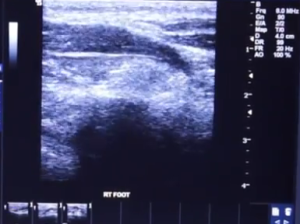Foot Pain Tips for Runners
Performance Place Sports Care, Huntington Beach CA
714-502-4243
Info@P2SportsCare.com
At Performance Place® we many times have runners come in with foot pain and race deadlines. We have even seen runners barely able to walk yet still asking if they can run 15+ miles the next day. I love runner and endurance athletes I really do… they are great people, tight community and great support but recreational runners I encourage you to take this motto and live by it.
“Live to run another day”
There’s always another event and running is not your livelihood. If you know us you know we do not stop people from training for tiny reasons but at times there are very real risks you need to be aware of if you are planning on running into to your coming years. On that note I wanted to compose a TIP PAGE on what runner should know about foot pain.
#1 Waking up with foot pain does not always mean Plantar Fasciitis
I have treated tons of runners with Plantar Fasciitis. Some feel pain around the medial aspect of the calcaneus every morning and others only feel pain in that same location after very hard workouts. Fact is there is a huge range of severity someone can have with any injury. Not all conditions will present in “textbook fashion”… in fact it almost never happens!
#2 Foot numbness is not always from a tight shoe
Let’s start with this… there are some very serious conditions, which can present as numbness of the foot.
• Piriformis Syndrome
• Sciatica
• Disc Herniation
• Spondylolesthesis
• Posterior Compartment Syndrome
• Anterior Compartment Syndrome
• Tarsal Tunnel Syndrome
• And so much more….
Loosening your shoe may seem like a quick fix but if it does not go away you need to be seeing someone who knows how to properly diagnosis your condition. Some of these conditions can leave someone in poor condition if left unresolved for a long duration of time.
#3 Buying orthotics while buying new shoes is not a fix all for foot pain
Personally I am not a big fan of the “one solution for all” orthotics in shoe store for foot pain. Maybe they work for some runners but here is my issue. I want the person assessing the runner to look at the movement of their spine, hips, knees and ankle for passive and active range of motion in addition to assessing gait from shoulders down before recommending a correction. Does this runner have a movement restriction, which might not be able to be corrected through exercises and treatment, or do they have a “tight muscle/ tendon” creating the gait abnormality, which can be corrected?
Anything is possible but these problems will not be found if not assessed properly…. and having a runner stand on a foot scanner in a shoe store will not assess dynamic motion of the runner. Sorry guys… I wish it were that simple.
#4 Know when to not “run through it”
This is probably the toughest thing for a strong-minded athlete. Overall the ability “run through it” is a plus in my book but also you need to know when not to run through foot pain. In my opinion as a healthcare professional that also runs, I would use this criterion of what is an abnormal feeling in the foot and will merit treatment sooner than later:
• Feeling of ripping or tearing
• Pain in the bone during even standing
• Foot pain with coughing or sneezing
• Pain during the first few steps in the morning
• Numbness anywhere on the foot
• Arch tightness, more so that other side for more than 3 days
#5 Not eating correctly will increase probably of bone injuries
Poor nutrition can create increased catabolism of the body’s tissues. Catabolism of the tissue is a breakdown of bone and soft tissue to supply the body with energy needed for daily functions and exercise. Girls of high school and college age have a particularly high probability of developing eating disorders creating more injuries. If you are experiencing high incidence of stress fractures or stress reactions you should talk to a RD about your quality and quantity of food.
#6 Plantar Fasciitis and Achilles Tendon issues can be correlated
The plantar fascia and Achilles tendon have a direct fascia connection and in my clinical experience it is not uncommon to have a runner or jumper develop Plantar Fasciitis after having duration of tightness of the Achilles. It does not happen with everyone but the connection is too common to ignore in my opinion.
#7 Tendons and muscles lie deep to the plantar fascia
One fact most runners forget when it comes to foot pain is that there are multiple layers of tendons and muscle which can be the pain generator in the area. I have see many cases of foot pain where the deepest muscles in the foot develop fibrous changes with some swelling, which in turn pushes on the plantar fascia sitting on top. This can be commonly misdiagnosed as a tear or strain of the plantar fascia but is far from the truth. What you have dictates your treatment plan and outcome… so know what you have before you begin to treat it.
#8 Change your shoes before they look used
Don’t be cheap! Your shoes are the only thing you have to buy to run and some will even debate that (barefoot runners). You don’t need different color Lulu pants and a new fuel belt… even your fancy new Garmin is not as important as a pair of none broken down shoes. I have a friend who runs maybe once every few months in an old, holey pair of basketball shoes and he wonders why he has foot pain. Duh!
Check out our Youtube Channel

